Huawei P60 Pro hands-on review: seeing the light
Variable aperture snappers and incredible image processing
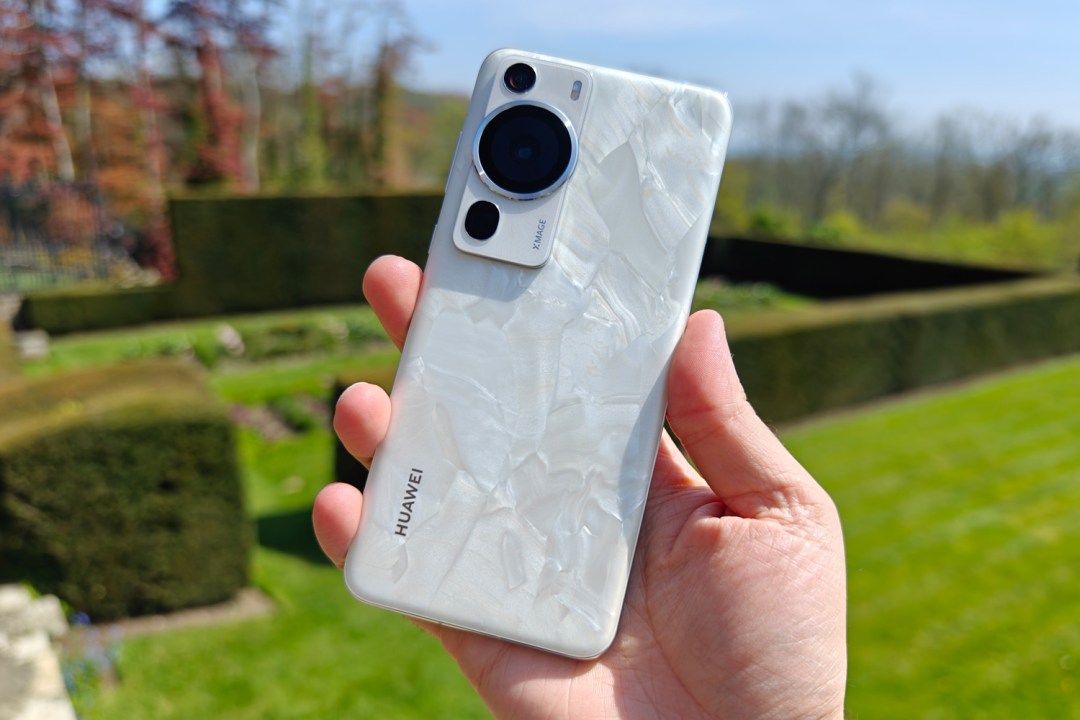
Huawei will tell you the P in its P series flagship phone line never stood for ‘photography’ – but its latest effort has a serious set of cameras all the same. The Huawei P60 Pro lands with a variable aperture main lens and a multi-purpose telephoto that blends impressive low light ability with magnificent macro shooting.
Killer photography abilities don’t automatically earn a handset a place on our best smartphones list, though – and unlike rivals, Huawei hasn’t gone for an oversized 1in sensor to maximise its light gathering potential. It also has a few extra software handicaps to contest with here in the west, and unapologetically flagship pricing. So does the Huawei P60 Pro impress in other areas?
Design & build: pearls of wisdom
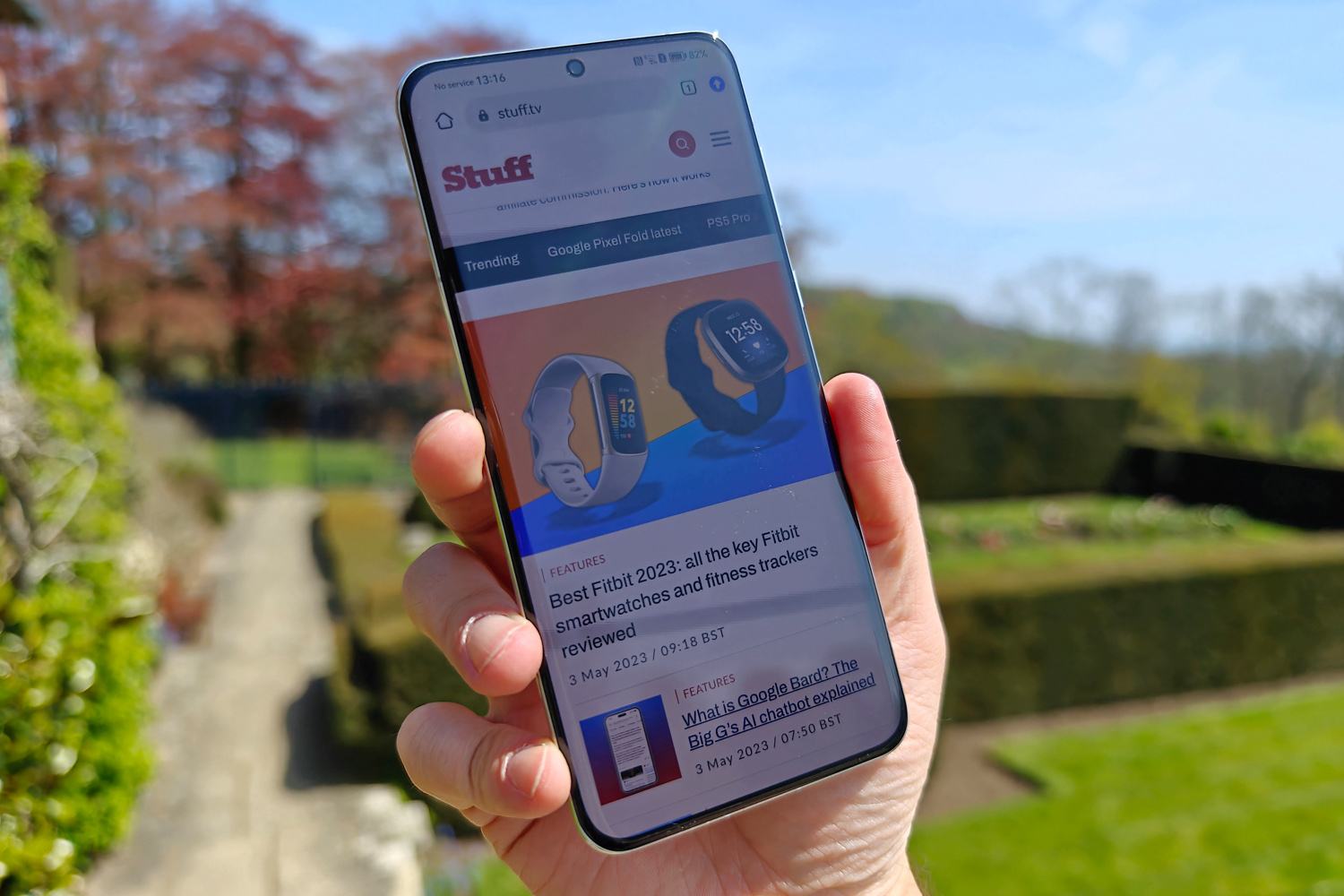
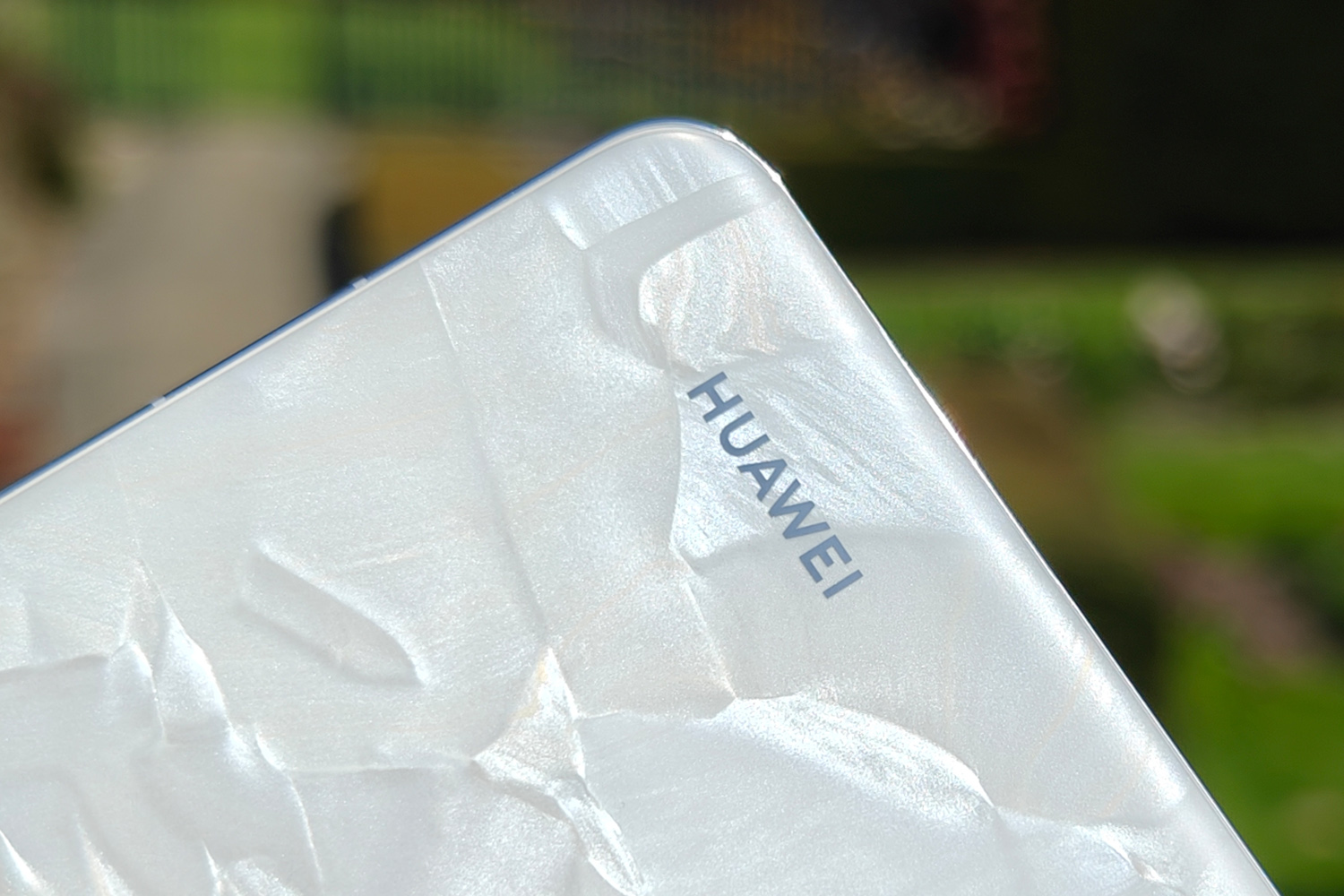

From the front there’s no mistaking the P60 Pro for anything other than a modern flagship phone. It’s rocking 2.5D curved glass on all four edges, giving the screen a bubblicious appearance that sits comfortably in your hand. Palm rejection is for the most part smart enough to know when you’re simply holding the phone and when you actually mean to swipe the screen, and the few hiccups we experienced might have been down to our sample running an early firmware build.
The under-display fingerprint sensor was very quick to recognise our digits. Facial recognition was speedy as well, despite not using the dual-sensor setup as Huawei’s earlier Mate 50 Pro. We’ll take the P60 Pro’s small punch-hole over a chunkier notch every time.
The true star of the show has to be the stunning Rococo Pearl finish at the rear (a more basic black is also available), set into a chromed metal frame. This holographic white pattern has real wow factor, glistening in the light and doing a convincing impression of genuine pearls. Apparently every single phone has a unique pattern: we checked with the other journalists present at our hands-on session and couldn’t spot any duplicates.
It’s smooth to the touch and disguises fingerprints brilliantly, so would be a shame to hide it underneath a case. Good job the P60 Pro is every bit as tough as the rest of the smartphone class of ’23, then. Huawei has used its own Kunlun reinforced glass, which should survive accidental drops and shrug off scratches should the phone share a pocket with anything pointy.
We also thought the camera bump was a cute design flourish: the physical aperture main snapper is flanked by the ultrawide and telephoto lenses in a way that mimics the face-on view of a traditional 35mm camera. There’s a lot more character here than the “didn’t I see this last year” look of rival flagships.
Pop out the SIM tray and you’ll find slots for a single SIM card and one of Huawei’s proprietary Nano Memory expandable storage cards. There’s no 3.5mm headphone port, but you do get an IR blaster for controlling your other gadgets.
Screen & sound: bright and beautiful
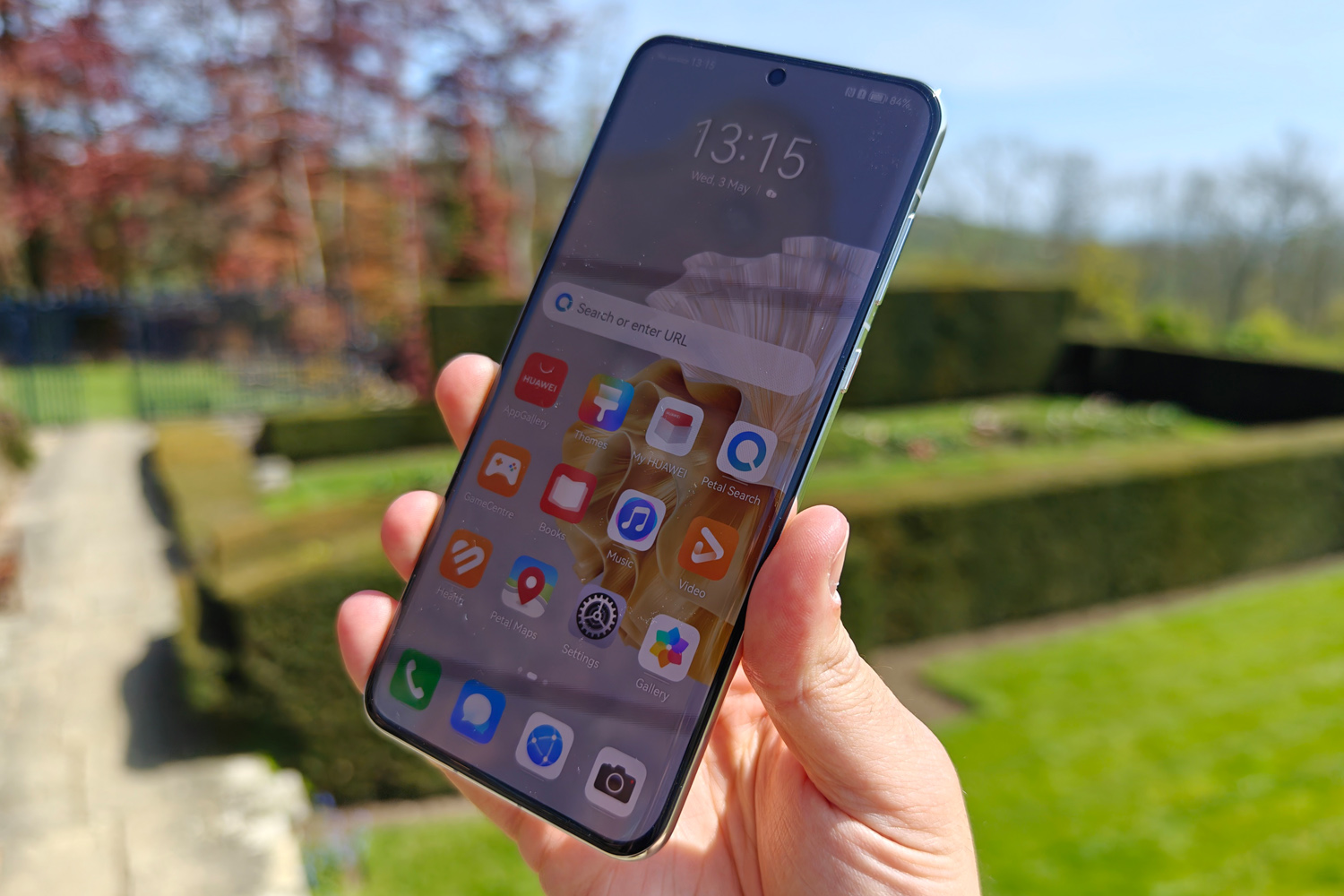
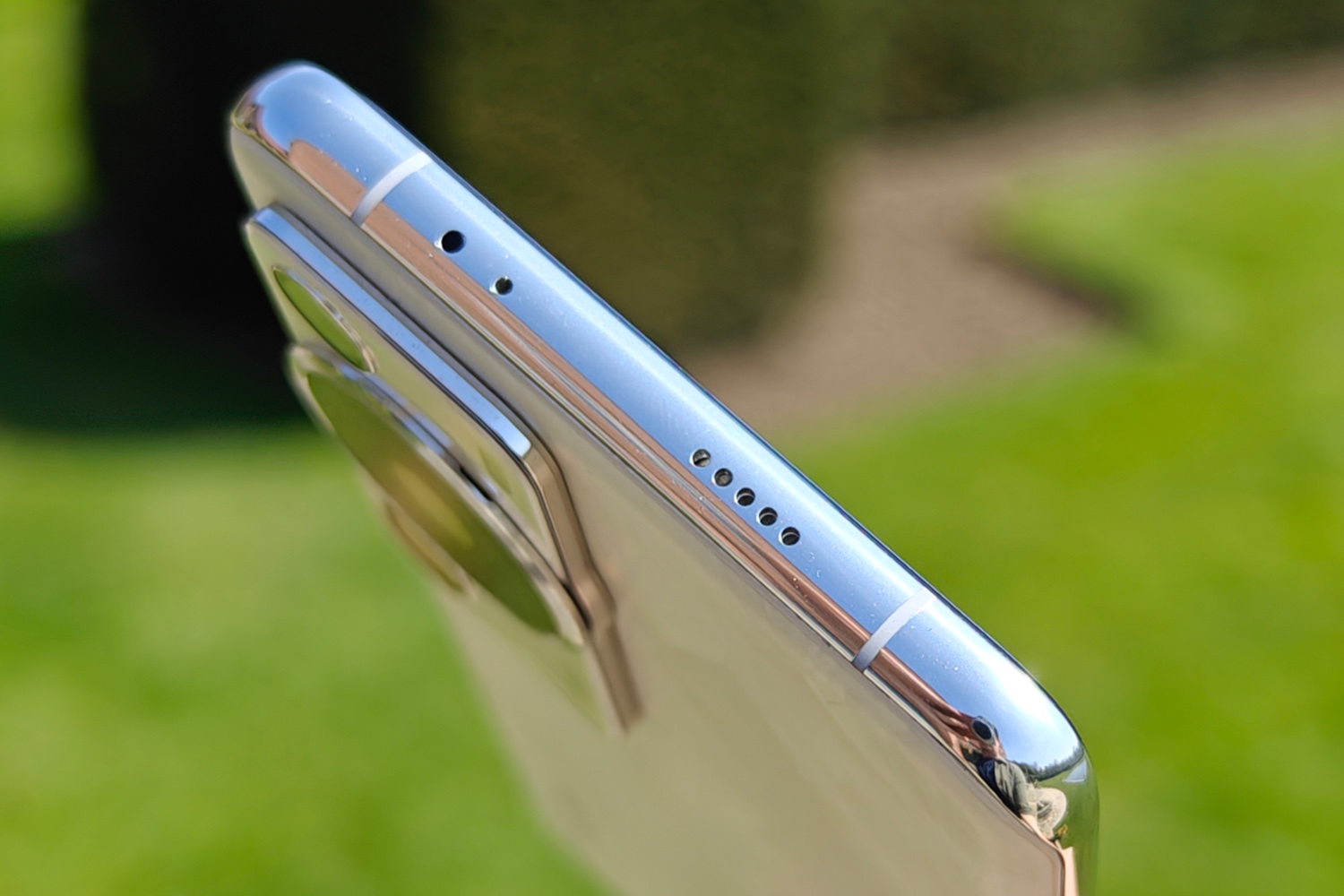
Huawei’s phone screens can usually be relied on to be a treat for the eyes, and the P60 Pro is no exception. The 6.67in OLED panel has a fantastically sharp 2700×1220 resolution (which can automatically dial down to save power in battery saver mode) and dynamic 60-120Hz refresh rate. Add in 300Hz touch sampling and every input felt very responsive.
Viewing angles are top notch, and brightness is very respectable. It was never as eye-searing as the Oppo Find X6 Pro, or the more widely available Samsung Galaxy S23 Ultra, but we had no trouble seeing what was onscreen while outdoors on a particularly sunny day. HDR content kicks things up another notch to give movies extra impact, and 1440Hz PWM dimming meant there was no visible flickering at night when dimming things right down.
Subtle screen curves mean light reflections aren’t a big deal, and the default colour profile has been well judged. Images look convincing and colourful without being overly vibrant. We think the panel looks a little warm out of the box, but the Settings menu leaves plenty of scope for tweaking using a full RGB colour temperature wheel.
A down-firing main speaker and earpiece combo deliver a decent amount of audio punch to match the impactful onscreen images. There’s plenty of volume and vocals are satisfyingly clear, without being drowned out by other instruments. Don’t expect much in the way of actual bass, but it’ll do just fine for podcasts and YouTube catch ups.
Cameras: where the action is
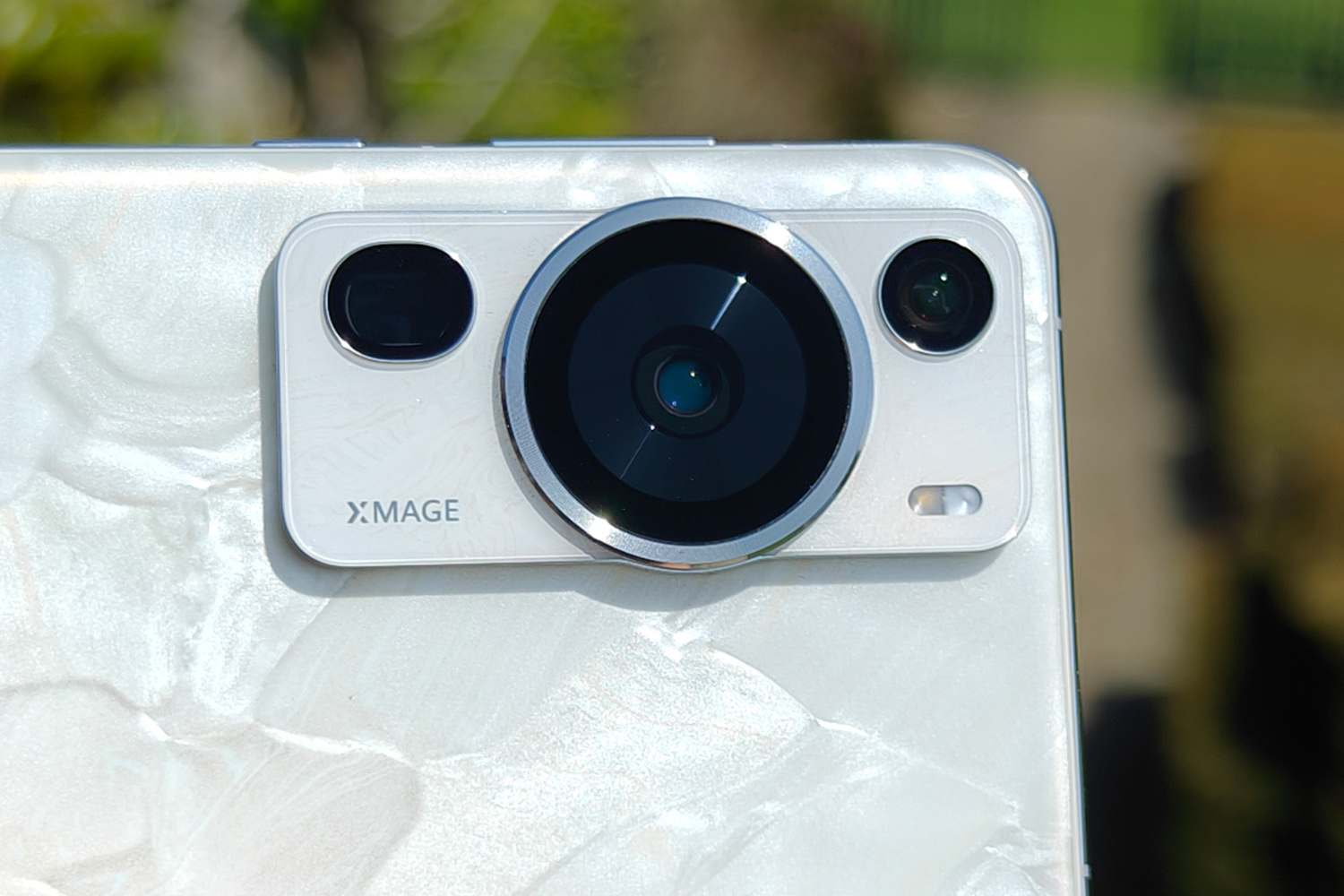
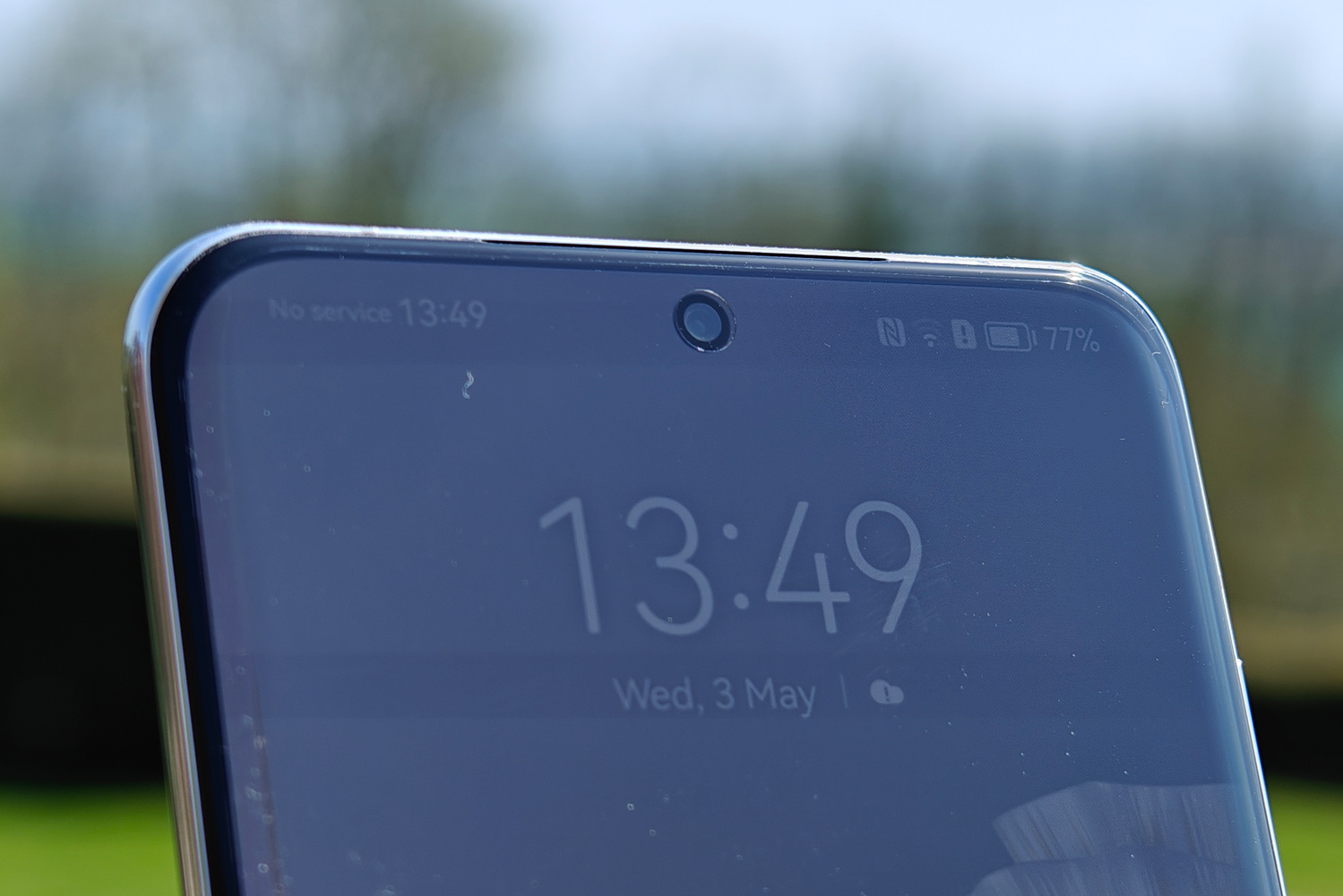
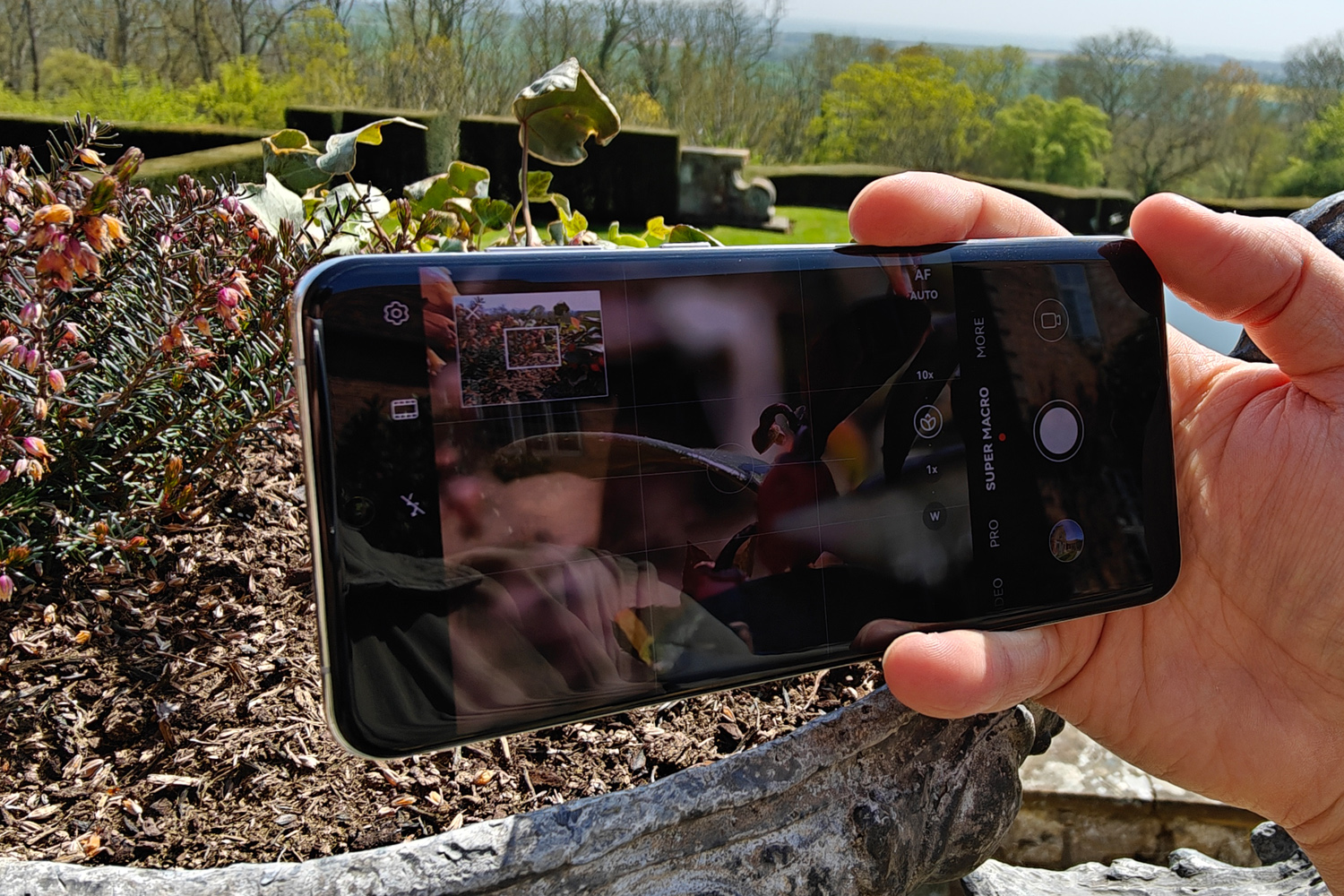
Rival phone makers are yet to match Huawei’s unique 10-step variable aperture camera lens, which made its debut last year on the Mate 50 Pro and takes centre stage here. It lets you pick between a wide open aperture for dreamy depth blur, or a closed one for sharper shots. There’s a 48MP sensor behind it this year, and it has a slightly longer 25mm focal length, but the results are the same: the P60 Pro is able to deliver authentic bokeh whenever you fancy it, yet can still get impressively close to your subject without the soft focus issues encountered by phones with giant 1in sensors.
The default camera mode doesn’t let you pick which aperture to use, but the Pro mode lets you pick between f/1.4 and f/4.0, with eight steps of light in between. Add in optical image stabilisation and you’re looking at nearly three times as much light intake as the outgoing Huawei P50 Pro.
It’s backed up by a 13MP, f/2.2 ultrawide, which is about as accomplished as those snappers get, but the other head-turner is the new 48MP, f/2.1 telephoto. It’s good for 3.5x optical zoom, has its own OIS stabilisation, and is capable of 10x tele-macro closeups – something neither the Samsung Galaxy S23 Ultra nor Google Pixel 7 Pro can pull off. A 10-channel multi-spectrum sensor is meant to produce impactful colours, and the firm’s XMAGE image processing algorithms to back it all up.
We put the P60 Pro through its paces at Port Lympne safari park, in a mixture of lighting conditions from blazing sunshine to near-total darkness, and walked away very impressed.


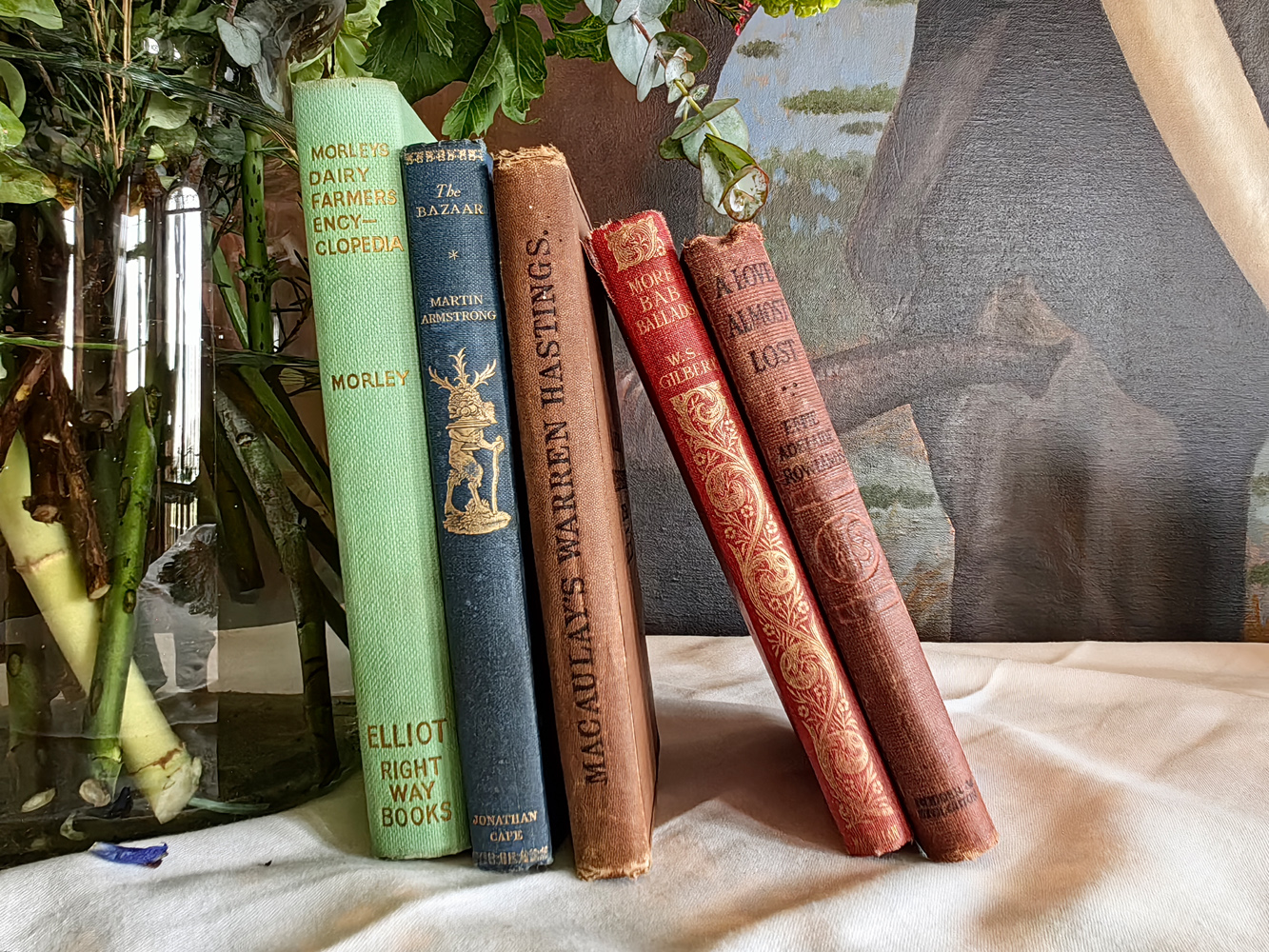
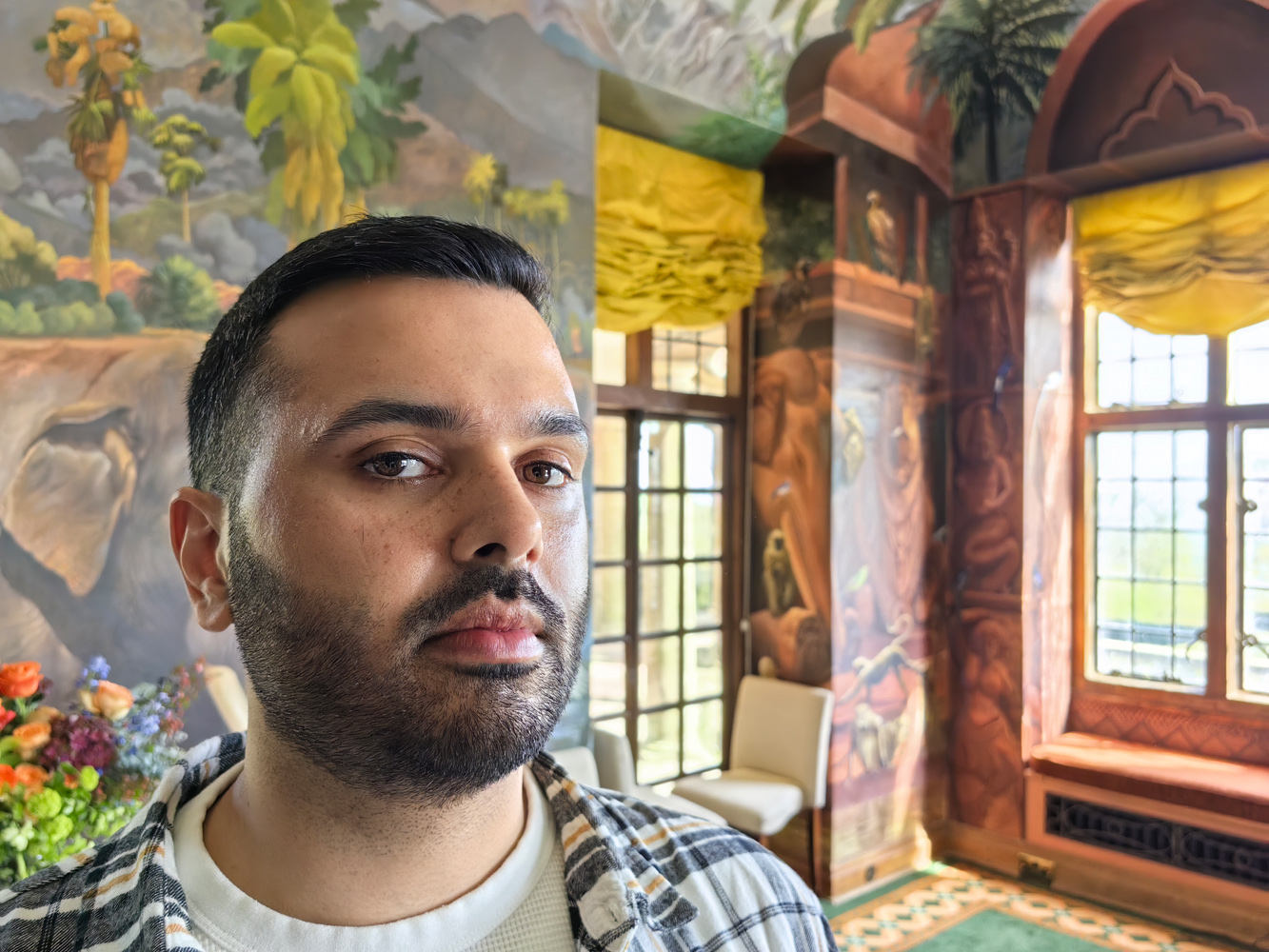

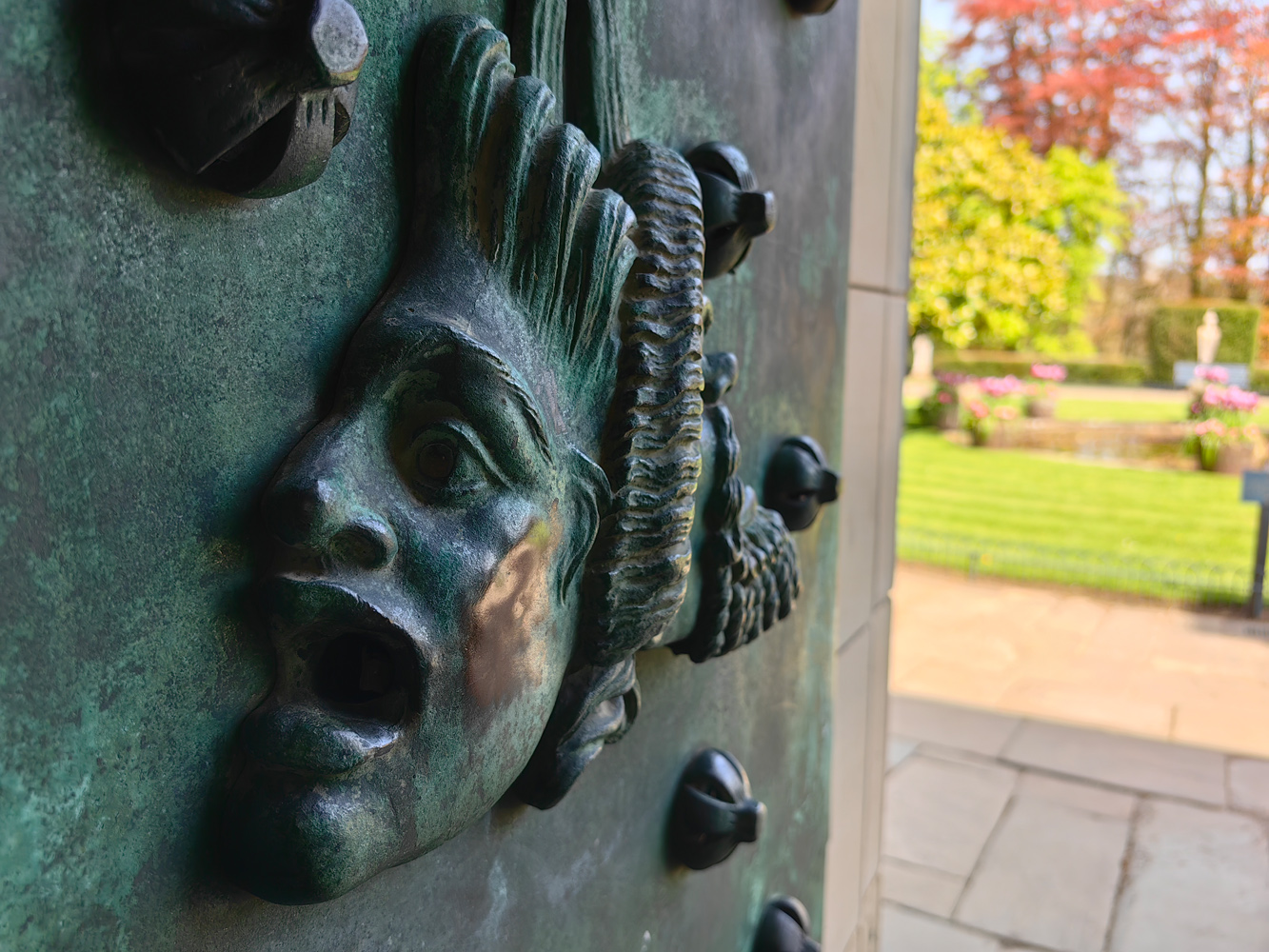



Colours looked accurate, detail was well resolved across all three lenses, and exposure was handled deftly in a range of light. Image stacking and algorithms work to great effect to capture a very wide dynamic range, with little to no downtime between multiple snaps. For a range of subjects, the P60 Pro comfortably competes with the very best of the phone world.
The camera app puts a 10x zoom mode within easy reach, and with good reason. In bright light it takes impressively clean and detailed shots, with OIS helping out once the sun starts to set so you can continue snapping. Many of our snaps were taken using the telephoto lens, but you’d have a hard time telling without peeking at pixels.

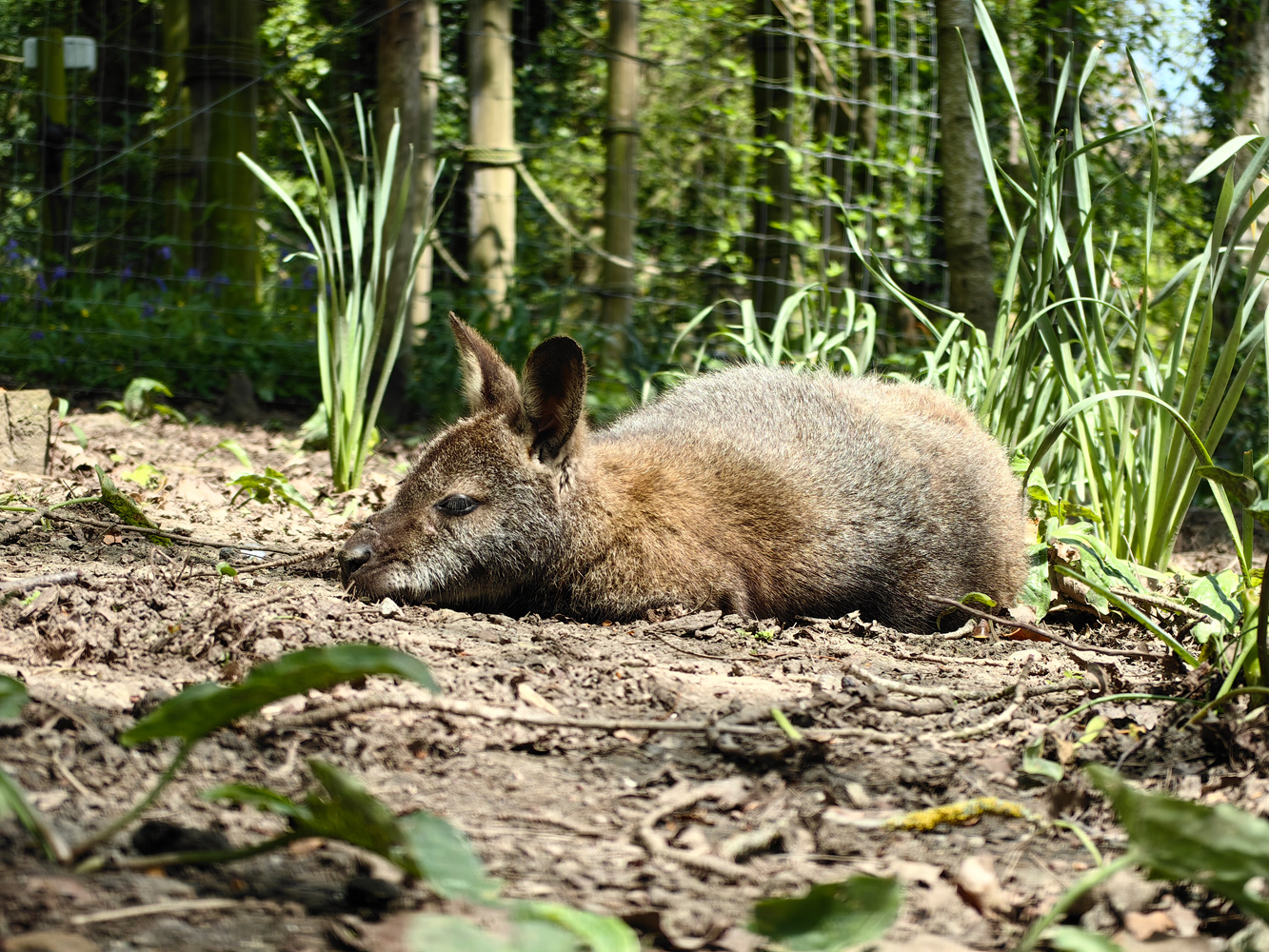


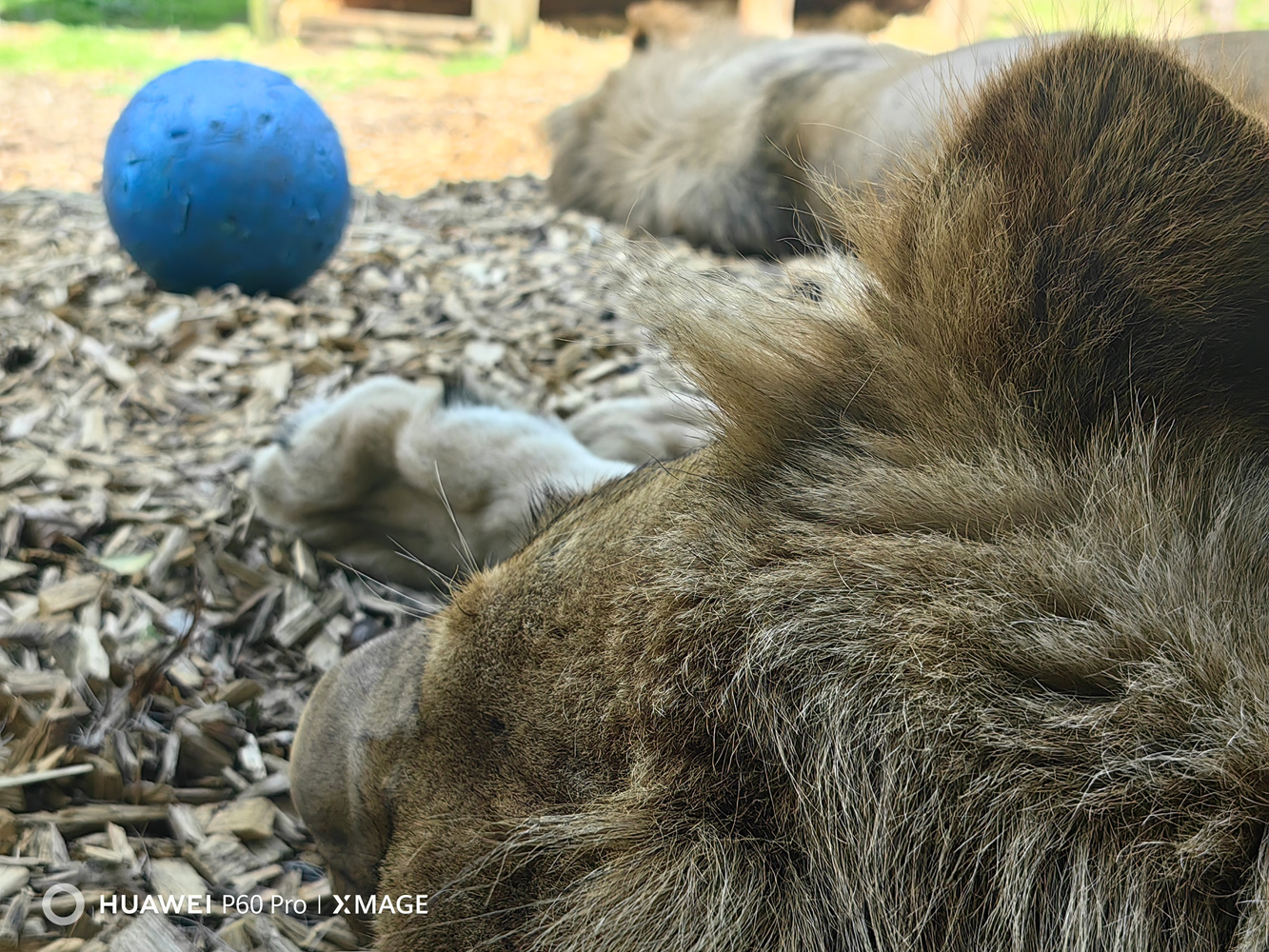
As the light began to fade, we quickly noticed that the image processing can make night shots look unnaturally bright, turning what should be twilight into more of an overcast day. You can even snap in near-near complete darkness and it’ll produce a relatively clear image, although details drop off massively once you pay closer attention.
The telephoto is still perfectly capable at sunset, though, and all three lenses can keep snapping in the standard mode without having to resort to long exposures. Serious photographers might grumble that the resulting images don’t truly represent reality, but they can preserve memories of an event or place that would be a dark, poorly resolved mess on many rival phones.




It’s more of a niche use case, but we were still impressed by the zoom lens’ macro focusing abilities. There’s an impressive amount of bokeh on display, with the f/2.1 aperture giving it the edge over rivals when it comes to gathering light. Fine details are preserved and digital zoom artefacts are kept well under control.
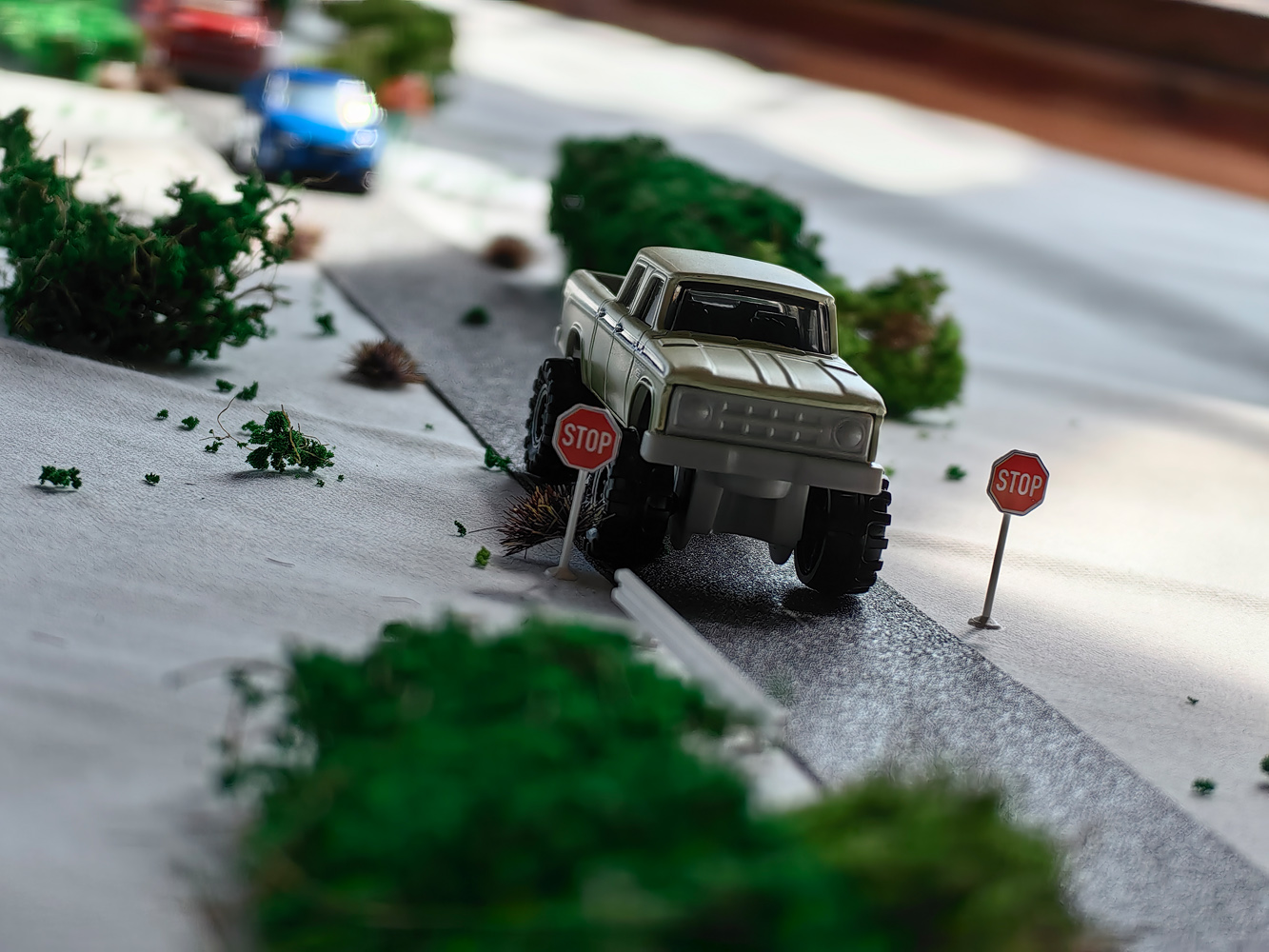

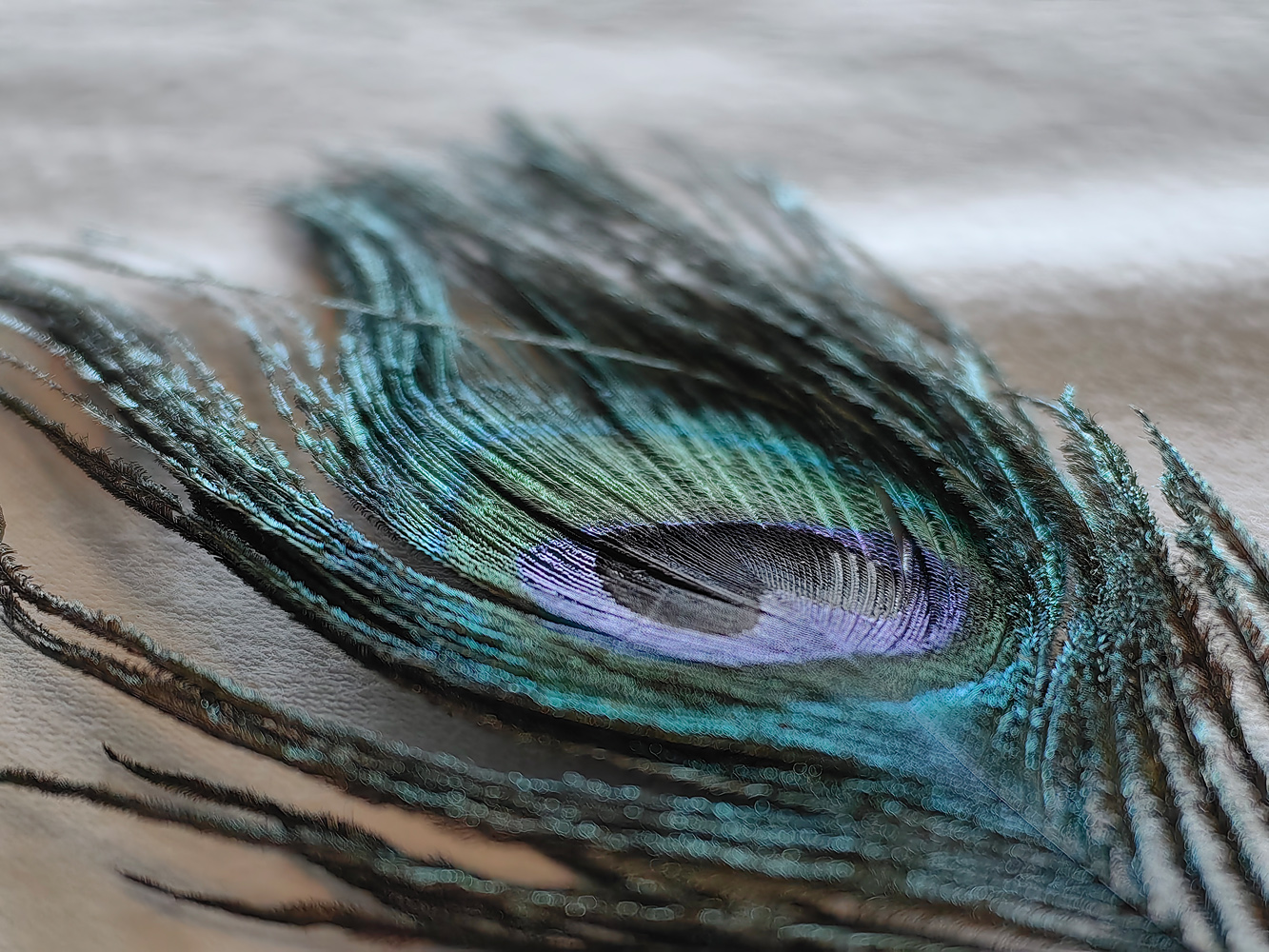
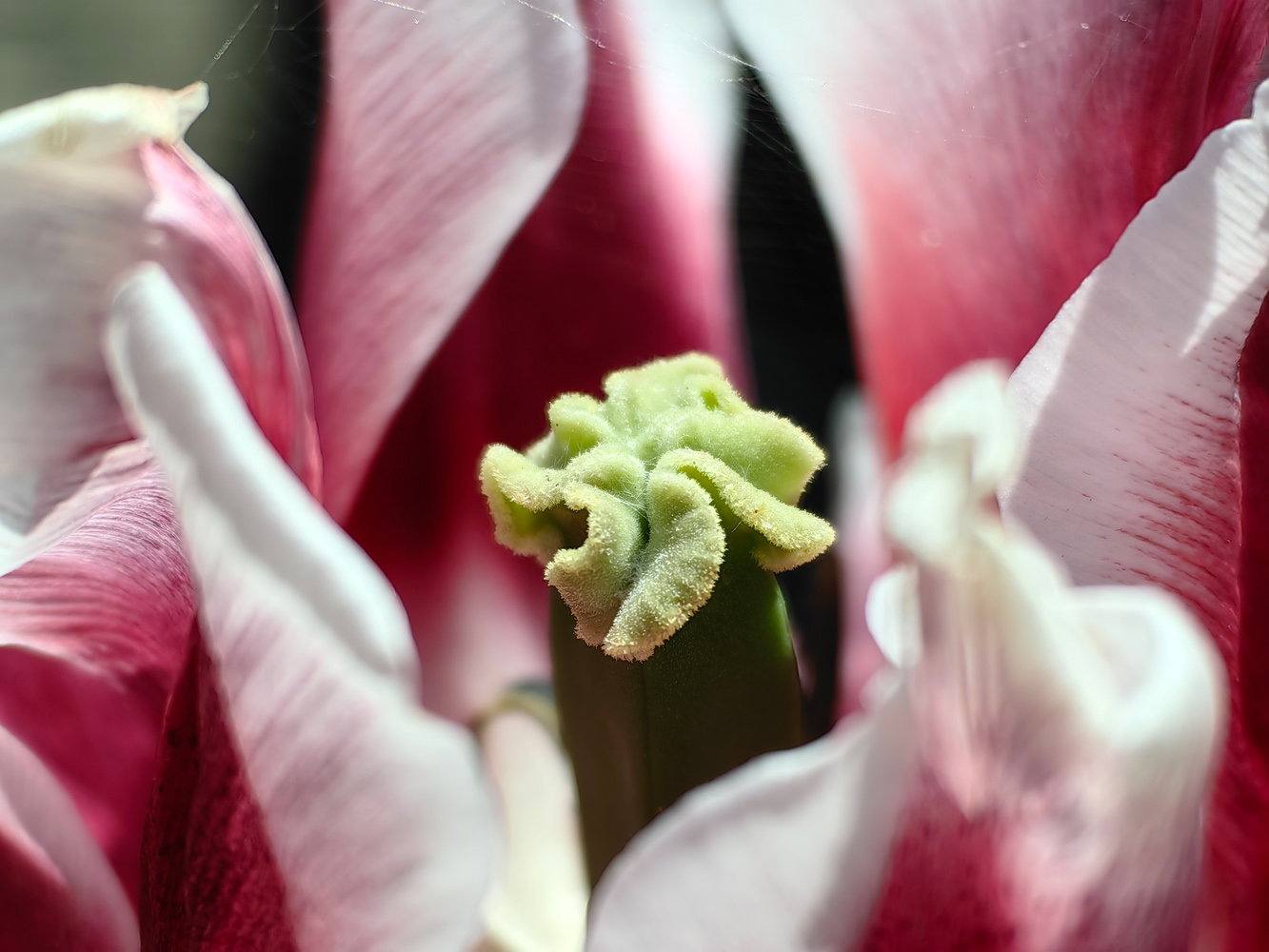
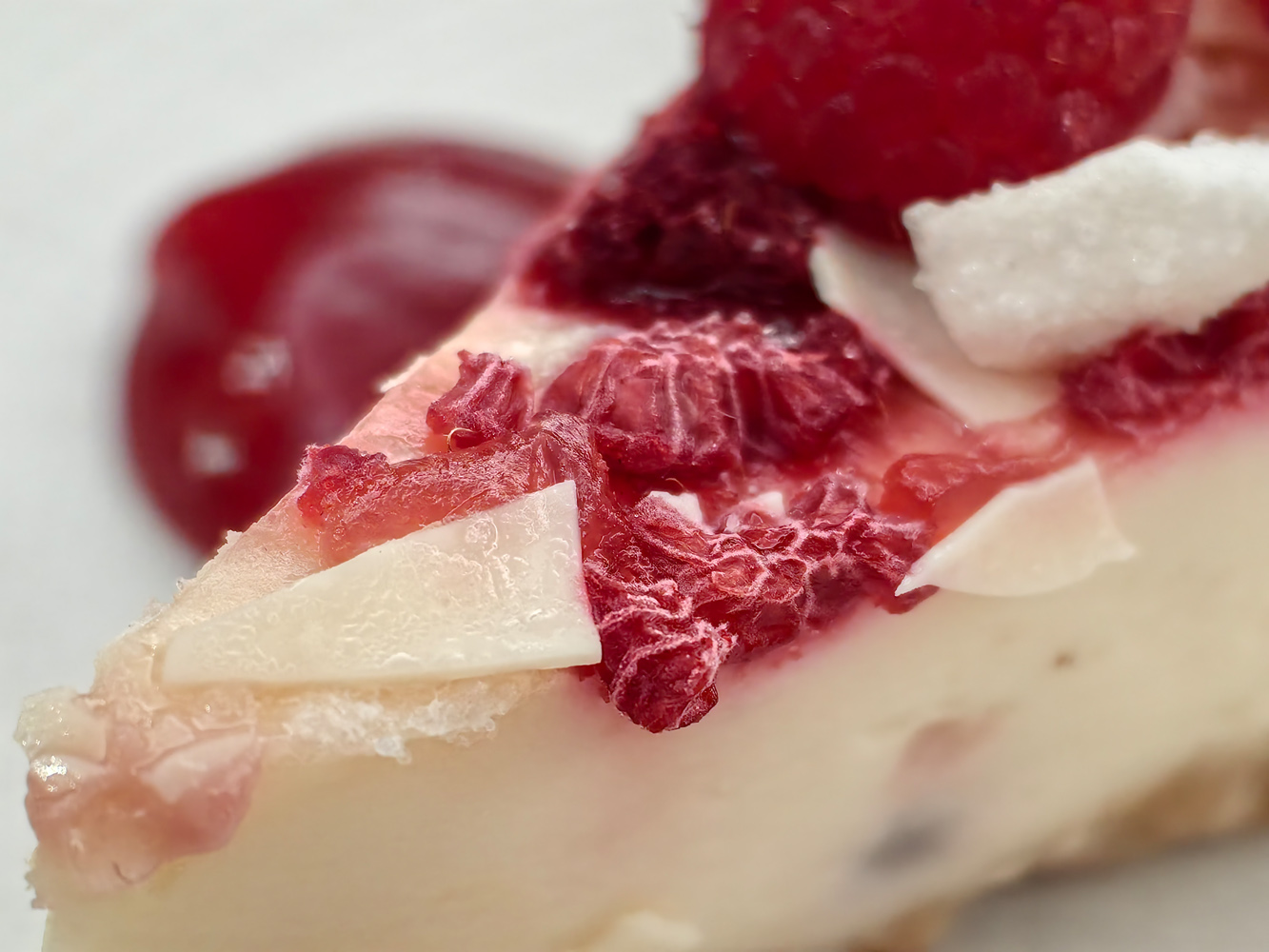
We don’t think this is the best set of cameras you’ll find on any smartphone: large-sensor alternatives like the Xiaomi 13 Pro and Oppo Find X6 Pro deliver on detail and depth, while the Galaxy S23 Ultra and Apple iPhone 14 Pro have well-rounded hardware backed up by stellar processing. But the P60 Pro is most certainly up there.
Performance, software & battery: you know the drill
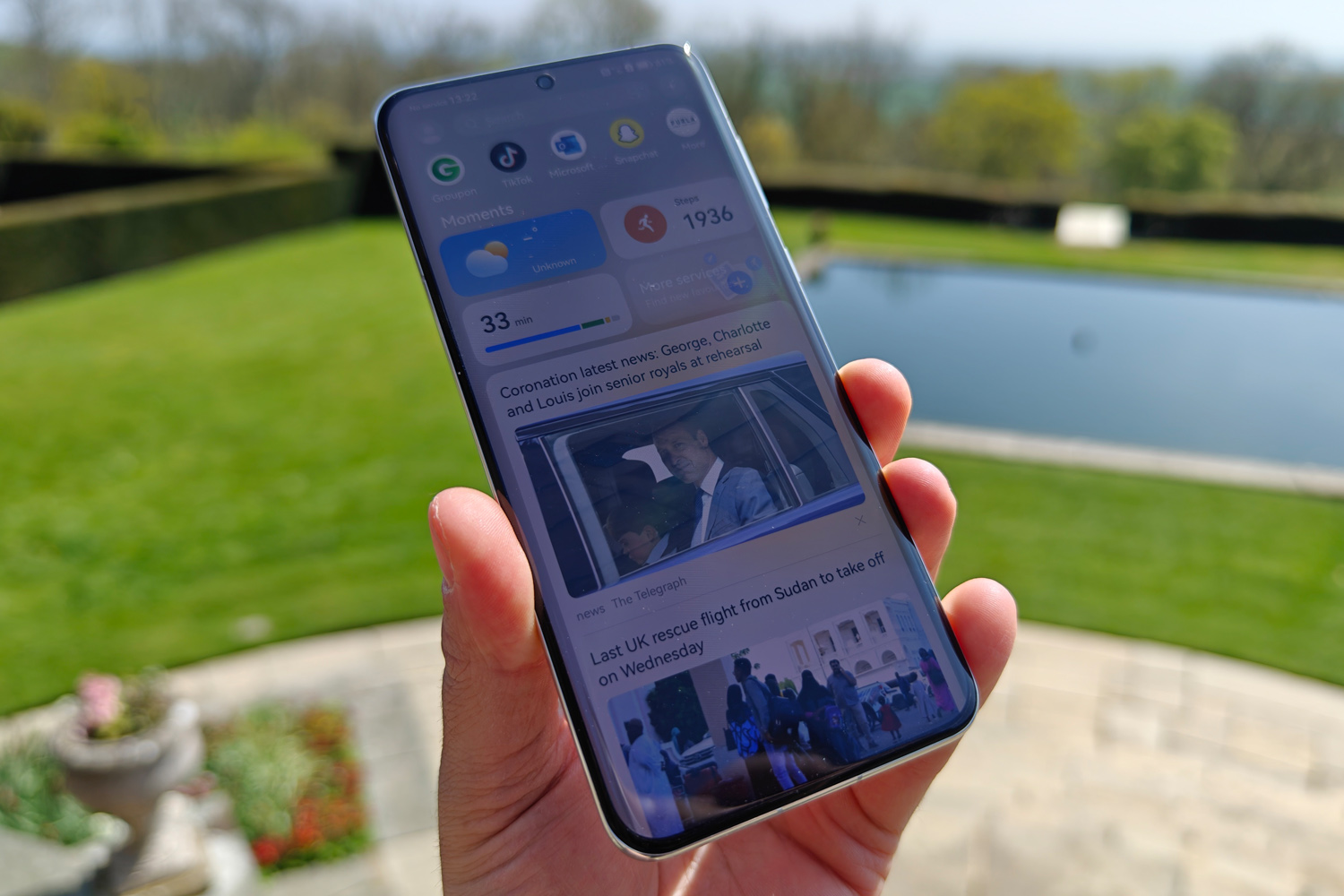
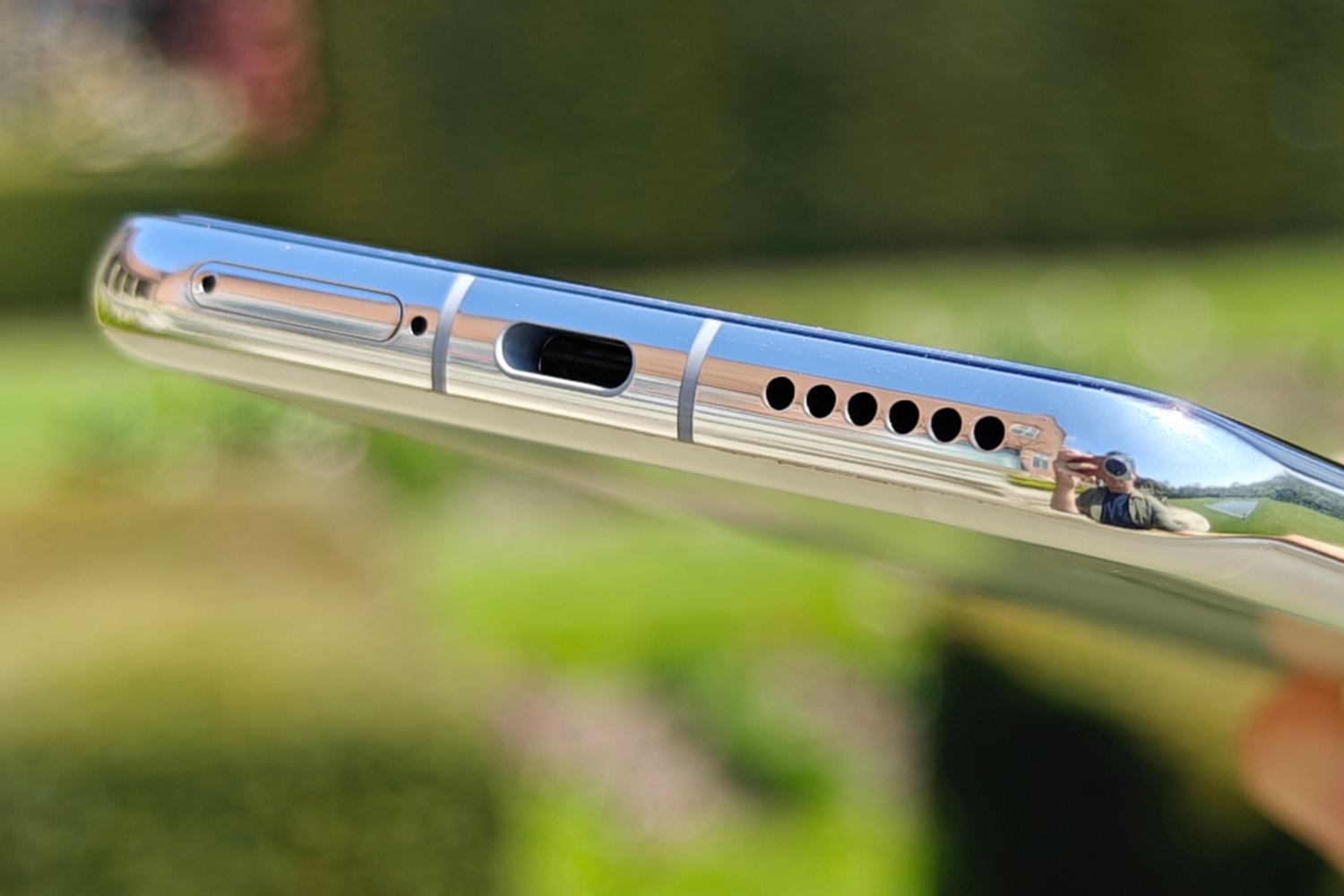
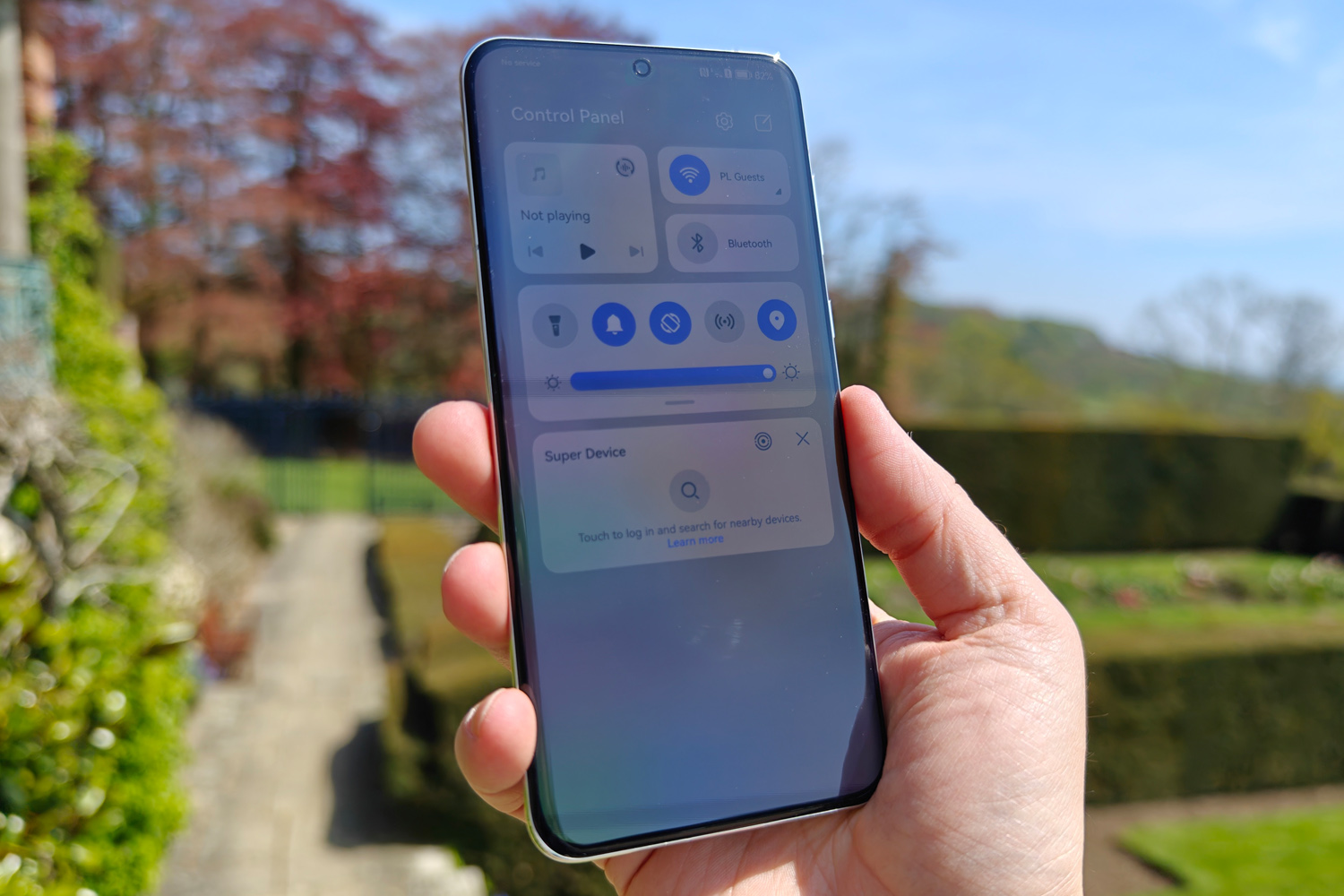
It certainly felt like a 2023 flagship in use, opening apps in a flash and happily running two side-by-side in split screen mode. But under the hood the P60 Pro is running a previous-gen Snapdragon 8+ Gen 1 CPU. Ongoing trade restrictions also mean this is a 4G-only phone, and the EMUI software goes without access to Google Play Services.
Huawei’s AppGallery does have a lot more heavy hitter apps than it did previously, so you’re able to add Tiktok, Snapchat and Outlook without jumping through any extra hoops. Others can be sideloaded with a bit of effort, which might dissuade anyone that doesn’t know how to tinker with Android. Apps that rely on Google services just aren’t going to play ball, though.
We were still able to play most of the games we tried, including big hitters like PUBG, at high settings and smooth frame rates, though this does take a step back to the most powerful gaming phones on sale right now. 8GB RAM and 256GB storage are what we’d expect from a high-end handset, at least,
Otherwise EMUI 13.1 feels very similar to previous iterations of Huawei’s software. Apps still live on the homescreen by default, the firm’s TODAY news feed is just a swipe away, and the Celia voice assistant can be invoked by holding down the power button. There’s a home-grown app for just about everything, including a media player, ebook store, maps app, web browser, email client and document editor. If you were inclined to cut yourself off from Google entirely, you’d have no trouble doing it with a P60 Pro in your pocket.
Battery life was consistently good in the several days we’ve spent with the handset so far. The 4815mAh cell might not be the biggest around, but the P60 Pro had no trouble lasting from morning through to evening with liberal use of the rear cameras and some video streaming on top of our usual routine of web and social scrolling. It’s more in line with the Samsung Galaxy S23+ than the S23 Ultra, but still a great showing for a top-tier phone.
Huawei pulls one back over Samsung and Apple with 88W SuperCharge wired charging. The bundled power brick can deliver a full charge in just under an hour, so you’re never waiting too long for a top up. The phone also plays nicely with Qi wireless charging pads; get a powerful enough pad and it’ll refuel at a none-too-shabby 50W.
Huawei P60 Pro initial verdict
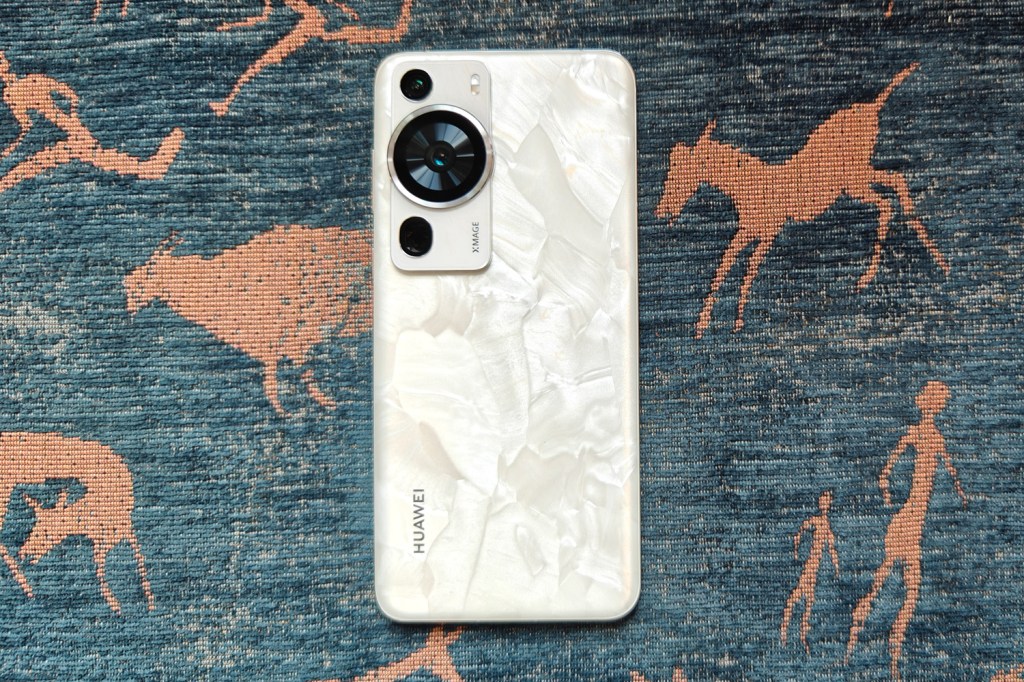
It’s a great looking flagship phone with a quality screen and wonderfully versatile set of cameras, which take clean, colourful and detailed photos in all lighting conditions. The variable aperture fills each frame with dreamy depth blur – when you want it – and the telephoto lens’ macro abilities are top notch. Low light performance is also uncanny, if best suited to those that prefer their pics artificially illuminated over dark and dingy.
Add in all-day battery life and zippy performance, and the Huawei P60 Pro has plenty to like. The lack of Google support does hobble things on the software front, though. Rivals don’t have that disadvantage, and while they might not have lenses that are as lustworthy, they make up for it with larger sensors or higher pixel counts. When spending upwards of £1200, it’s understandable that some shoppers will want to stick with a phone that can use all the apps they like, not just some of them.
There’s something particularly satisfying about how this phone achieves its beautiful bokeh with honest-to-goodness hardware instead of software trickery, though. Keen photographers are sure to appreciate it, even if they can’t overlook its limitations.
Huawei P60 Pro technical specifications
| Screen | 6.67in, 2700×1220 OLED w/ 120Hz, HDR |
| CPU | Qualcomm Snapdragon 8+ Gen 1 octa-core |
| Memory | 8GB RAM |
| Storage | 256GB on-board |
| Cameras | 48MP, f/1/4-4.0 main w/ OIS + 13MP, f/2.2 ultrawide + 48MP, f/2.1 telephoto w/ OIS rear 13MP, f/2.4 front |
| Operating system | EMUI 13.1 |
| Battery | 4815mAh w/ 88W wired charging |
| Dimensions | 161x75x8.3mm, 200g |
